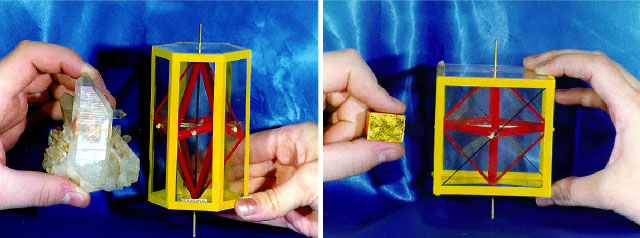
Mineral Basics (Part 2)
Crystalline structure means that the atoms inside the mineral are arranged into a symmetrical, three-dimensional structure. Natural glass and other amorphous substances are not minerals because they have no crystal structure. Two examples of crystalline structures are cubic and hexagonal.

Obsidian, shown here, is also called volcanic glass. Because obsidian has no internal crystal structure, it is not a mineral. (Photograph by Parvinder Sethi)

The arrangement of atoms in a mineral controls the shape of the mineral. The left photograph shows how quartz fits in the hexagonal crystal system. The right photograph shows how pyrite is a cubic mineral. (Photographs by Parvinder Sethi)
Fixed or variable chemical composition and a set of physical properties that can be used for identification means that each mineral type has its own chemical composition. The composition and internal structure determine the physical properties that can be used to identify the mineral.

Quartz, shown here in the form of amethyst, has a fixed chemical composition. The chemical composition and internal structure control the physical properties that can be used to identify the mineral. (Photograph by Parvinder Sethi)